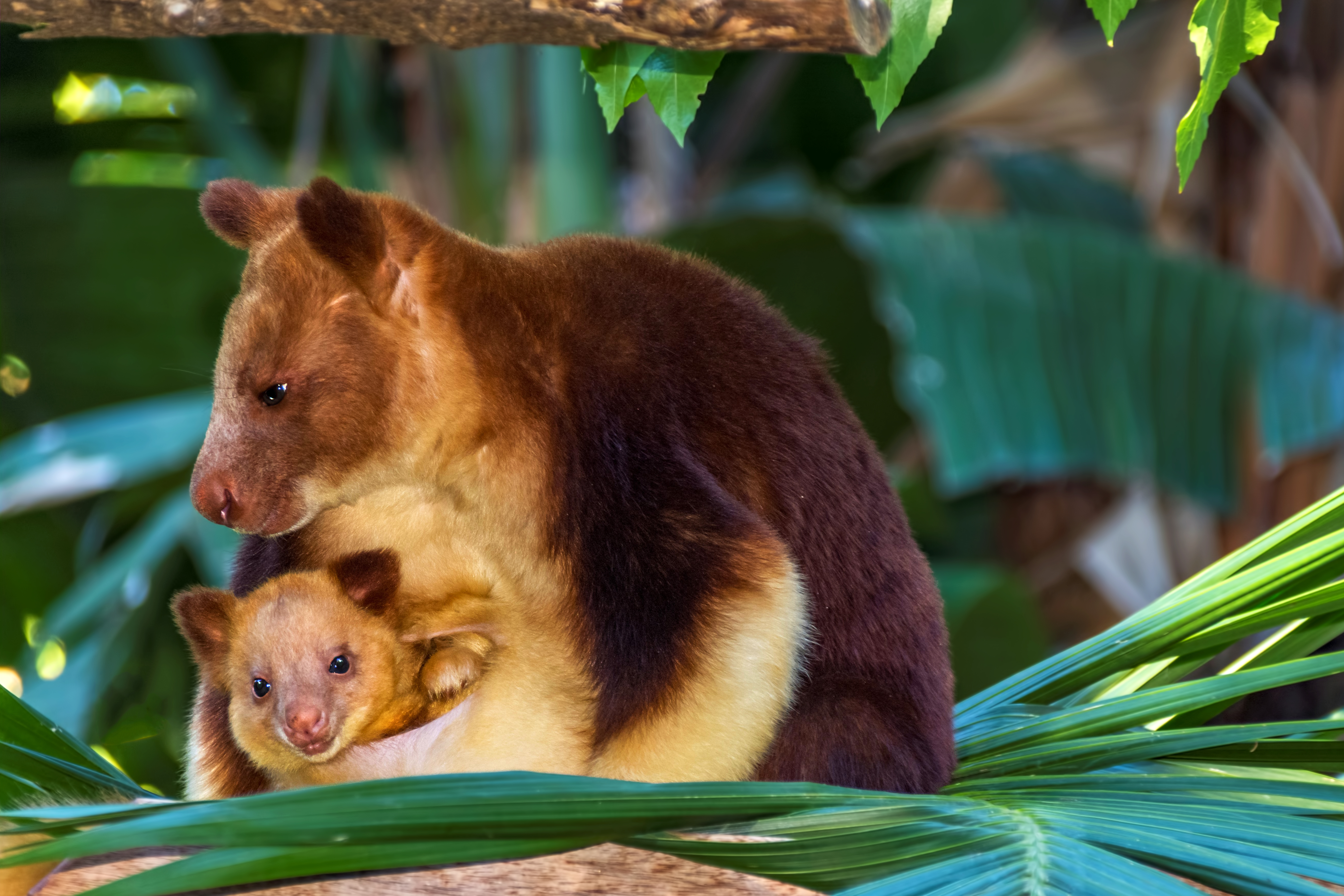
Usually we hear stories about animals going extinct or being put on endangered lists thanks to habitat loss, hunting, poaching, and global warming. So it’s especially nice when the opposite is true and an animal actually comes back from the brink.
That’s the feel-good tale of the rare Wondiwoi tree kangaroo, which has hopped back into existence after its last sighting 90 years ago.
The creature, a monkey-like kangaroo that hangs out in the trees of the montane forests of New Guinea, had only been seen once before by Western scientists, in 1928. Evolutionary biologist Ernst Mayr discovered the animal in the mountains of the Wondiwoi Peninsula, hence the name.
Mayr shot the animal and sent its pelt to the Natural History Museum in London, where it became the only known specimen in existence. Since then there have never been any pictures, samples or officially reported sightings of the animal, and it was thought to be extinct.
Enter amateur botanist Michael Smith, the man who trekked 1,524 metres high into the Wondiwoi Mountains in West Papua, Indonesia to prove the creatures are still thriving there.
The 47-year-old England native trained as a biologist and works for a medical communications company, but according to National Geographic he spends his holidays travelling remote parts of the world in search of rare flowers. After hearing about the Wondiwoi tree kangaroos last year, he assembled a team of four Papuan porters, a local hunter to serve as a guide, and a student from the University of Papua in Monkwari. The group set out into the jungle this past summer and once they got about 1,524 metres up, they began seeing dung and scratch marks on the trees, indicating the kangaroos were indeed there.
But it wasn’t until the final day of their week-long trek, as they were heading back down, that the hunter spotted a kangaroo 30 metres up. “After a lot of scrambling around trying to get my lens to focus on the animal peeking out from behind the leaves, I got a few half-decent shots,” Smith told NatGeo.
Those shots are now the only photographic evidence of the Wondiwoi tree kangaroo—one of 17 species and sub-species of tree kangaroo known to scientists—in existence.
Where has the Wondiwoi tree kangaroo been hiding for 90 years? We’re glad to see you! https://t.co/4XI7BakC1K
— Science Channel (@ScienceChannel) September 28, 2018
Experts have since confirmed the animal is indeed the rare kangaroo, noting its high-altitude ecosystem is probably what has allowed it to thrive undetected for as long as it has.
“The reason they remained unknown for so long is probably due to that bloody bamboo forest,” expert Roger Martin of James Cook University in Queensland, Australia said. “Only an intrepid [Brit] in pursuit of rhododendrons would have persevered.”
The next step is for scientists to return to the area to extract DNA from either ear tissue or dung and to compare it to the pelt Mayr collected nearly a century ago.
“Knowing [the animal] still exists provides a great opportunity to gather more information, since we know virtually nothing about it, as well as to ensure its survival,” Mark Eldridge, a marsupial biologist at the Australian Museum in Sydney, said. “It is one of the most poorly known mammals in the world.”
“It’s exciting to have a positive story for a change,” Martin added. “It makes the point that if we provide habitat for animals and otherwise leave them alone, then they will get on just fine.”
Chalk up another win for nature.
